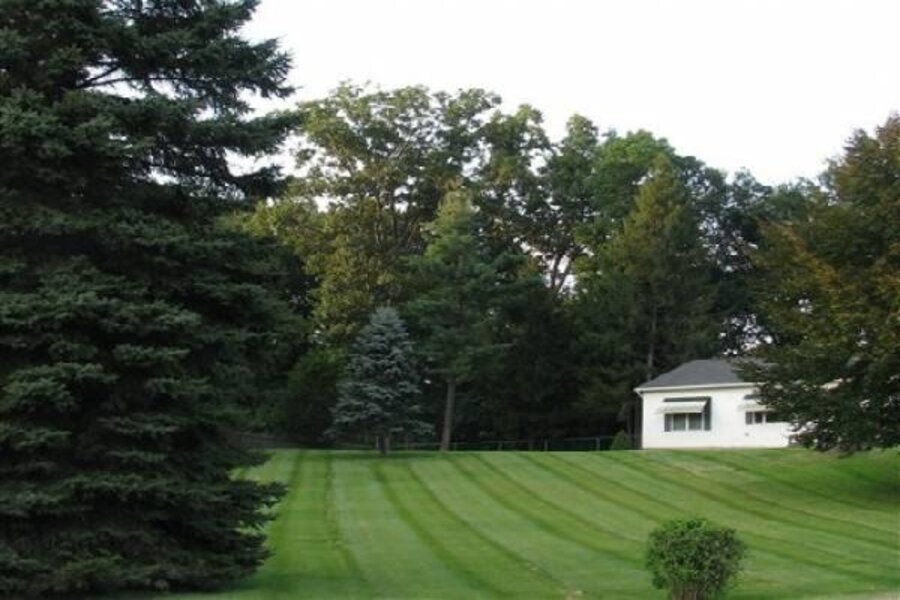Everything you need to know about lawn care
Loading...
Mowing the lawn is at once the most mundane and the most unique form of pruning. Everyone does it, yet what other kind of pruning calls for cutting off only part of a leaf blade — and thousands at a time? The reason grasses tolerate such pruning is because the growing point of a grass plant is nestled down near ground level, below the reach of mower blades. Just the same, mowing, like any other form of pruning, weakens a plant. So you have to strike a balance between what looks nice and what keeps the plants healthy.
How often and how much?
As a rule, mow frequently enough to remove no more than one-third of the length of the grass blades. For example, if you want your lawn 2 inches high, mow an inch off when the leaves reach 3 inches.
Keep in mind that uniformity of cut rather than closeness of cut plays a large part in making an elegant lawn. Longer grass also needs less frequent mowing than short grass, and creates shade that starves out weeds such as crabgrass.
The optimum mowing height varies with the grass species and growing conditions. Stress such as shade or drought calls for longer grass. Also, newly seeded lawns need to grow a little longer than established lawns.
Cut it right
Ideally, all grass blades are dry and standing up like soldiers when you go out to mow. By mowing down to the recommended length and not removing more than a third of the blades, the grass will not be so long that it is flopping over under its own weight.
One advantage of a rotary mower over a reel mower is that the rotary mower's cutting blade acts like a propeller to suck the grass blades upright. If you mow frequently enough, no need to rake up the clippings; left on the soil, they add valuable nutrients and humus.
If you have been remiss in mowing, lower the grass in stages to avoid shocking it, and collect the clippings after each mowing.
As with any type of pruning, sharp cutting blades make cleaner cuts — important for plant health and appearance in the case of lawns. Reel-type mowers make the cleanest cuts, but rotary mowers can cut longer grass.
Add a little interest?
No matter what type of mower you use, vary your mowing pattern each time if you want a uniform surface and to avoid permanent ruts in the ground.
On the other hand, you may not want to create a perfectly uniform surface. Notice just after you mow how the grass has a slightly different hue depending on the direction the mower traveled. This effect is most dramatic when a lush lawn has been cut with a reel-type mower.
In Great Britain, land of perfect lawns, lawn mavens create striped patterns in their lawns by directing their mowers back and forth across the greensward in neat parallel lines. British garden writer Hugh Johnson wrote in "The Principles of Gardening" (Simon & Schuster, 1983) that "regular stripes emphasize the calm and orderliness of a well-kept lawn. To a lawn fanatic the process of mowing is a pleasure in itself: the noise of the mower, the smell of the exhaust and the oil and the warm green cuttings. For the richest green and the most pronounced stripes three-quarters of an inch is best."
To each his own.
Editor’s note: For more on lawn care, read a blog post by Judy Lowe about the single best thing you can do for your lawn. Or check out another blog post about the pros and cons of mowing a wet lawn.
For more on gardening, see the Monitor’s main gardening page, which offers articles on many gardening topics. Also, check out our blog archive and our RSS feed. You may want to visit Gardening With the Monitor on Flickr. Take part in the discussions and get answers to your gardening questions. If you join the group (it’s free), you can upload your garden photos and enter our next contest. We’ll be looking for photographs of fruits. So find your best shots of summer’s blueberries, peaches, plums, etc., and get out your camera to take some stunning shots of early fall apples. Post them before Sept. 30, 2009, and you could be the next winner.





